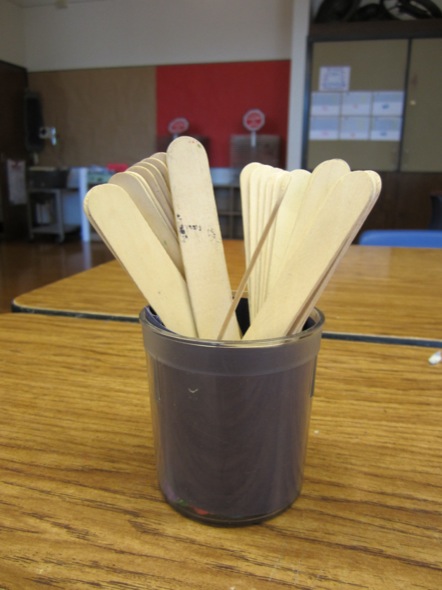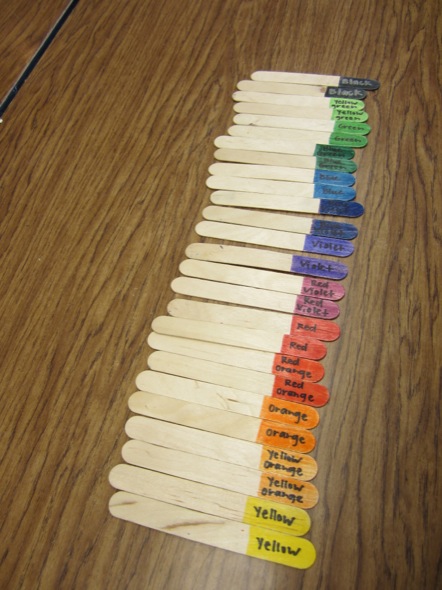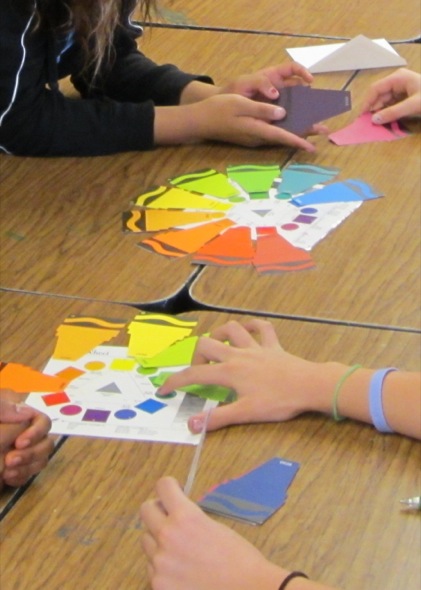I recently took a graduate class titled “Supports for English Language Learners.” In this class, I learned various strategies to use when teaching English Language Learners. I was also reminded of the importance of using vocabulary and visual aids in my lesson plans. I found most of the strategies I learned from this class can be incorporated into any classroom to benefit all students, not just my ELL students.
One assignment for the class was to implement a strategy we learned in our own classroom. The strategy I chose to implement was sentence starters. Sentence starters are when you write a sentence (or multiple sentences) on the board, and students repeat the sentence out loud and fill in the blank. This strategy helps students learn vocabulary.
I chose to implement sentence starters in a lesson on the color wheel. The vocabulary words I taught were the names of the 12 colors on the color wheel, and the words primary, secondary, and tertiary/intermediate.

To complete the activity, students need to be in groups of two. Instead of having them choose their partners, I have them pick a popsicle stick out of a cup.

The bottom of the stick is colored with marker and has the name of the color written on it. After they pick the stick, they read the sentences on the board and fill in the blanks for their color. Reading the sentences out loud in front of their peers helps students gain confidence and gives them practice speaking in front of others. My students did an excellent job listening to their classmates and even offered some help if it was asked for.
I put these three sentences on the board for them to read:
1. The name of the color is ___________________.
2. You get___________________ by mixing ___________________ and ___________________.
OR
You get ___________________ by buying it at the store.
3. ___________________ is a ___________________ color.
Here is an example of how a student would read the sentences:
The name of my color is green.
You get green by mixing yellow and blue.
Green is a secondary color.
Each student repeats the activity until all students have a popsicle stick. They find their partner based on who has the same colored stick.
After they find their partner, I pass out envelopes to each group of two. The envelope is filled with 12 different paint swatches, one for each color of the color wheel. (If you don’t have paint swatches, you can cut up some construction paper.) Each group also has a mini color wheel to look at. The color wheel is an excellent visual for them to use so they can see the placement of each color on the color wheel. You can look for mini color wheels in your favorite art ed catalog.

The students take turns pulling out a color swatch from the envelope. They look at the color and read the sentences on the board. Once they are finished, they place the color swatch in the correct location around the color wheel. Then it’s the next person’s turn. They repeat the activity until all 12 colors are placed around the color wheel. If they get done early, they repeat the activity without looking at the color wheel.
The students really liked this activity, and I have repeated it multiple times because of its success. It was refreshing to see the students working so well together, especially since they didn’t get to pick their partners. There was learning, laughing, smiles, and sharing. What a successful activity!
If you’re looking for even more color theory activities for your classroom, be sure to check out the Color Theory Basics PRO Learning Pack. You’ll learn the best strategies for introducing theory and exploring color mixing and walk away with engaging activities to support learning.
How could you use sentence starters in your classroom?
Do you have a strategy you use when introducing new vocabulary?
Magazine articles and podcasts are opinions of professional education contributors and do not necessarily represent the position of the Art of Education University (AOEU) or its academic offerings. Contributors use terms in the way they are most often talked about in the scope of their educational experiences.






